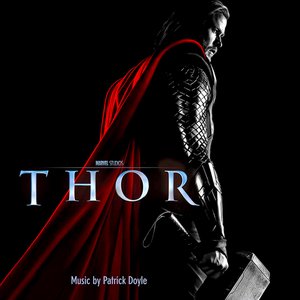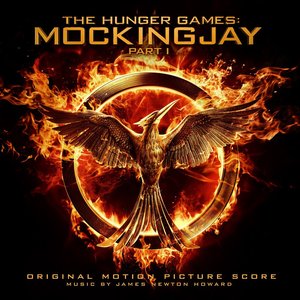Wiki
PERFORMERS
VOCALISTS
THE LONDON ORATORY SCHOOL SCHOLA
Listening Example: Disc Two | Track Fifteen| 1:31
The London Oratory School Schola was established in 1996 as the top boys chorus at the prestigious London Oratory School. The Schola sings as part of the school’s weekly Mass services and has appeared in numerous film scores including Danny Elfman’s Sleepy Hollow, John Williams’ Harry Potter scores, and of course, Howard Shore’s The Lord of the Rings. Although used throughout the scores, the boys become very closely associated with the forces of Nature and Shore’s Seduction of the Ring theme.
THE LONDON VOICES
Listening Example: Disc One | Track One| 2:32
The singers of The London Voices are hand picked for each engagement they attend. The choir has no fixed membership so that singers who excel at specific styles can be assigned the ideal projects. Under the direction of Terry Edwards, London Voices have performed a wide array of film and concert works around the globe, including standard repertoire of Bach, Handel, Mozart, Stravinsky and newer works by John Adams, Luciano Berio and Sir Michael Tippett.
Terry Edwards recalls, “My memories of the sessions are pretty vivid as I conducted all of the choral ones for the second and third films. Howard was very involved in composing new and/or changed material back at his hotel. We tended to record material to play him down the line during the first hour of each session. He had an unfailing ability to pick out any imperfections if there were any, and to suggest subtle changes to our performance or to his composition which would affect, in a magical way, what was heard so that it more closely matched the visions on the screen. I was considerably impressed with his ability to transfer his thoughts from his composition to our performance so that he would give us one hundred percent of his concentration when we needed it, despite the other pressures and events that must have been overwhelming him at that time.”
ELIZABETH FRASER
Listening Example: Disc Three | Track Eight| 0:03
Fraser came to the performing world as the lead singer and lyricist of the highly influential Cocteau Twins. In The Fellowship of the Ring and The Two Towers, her voice is associated with the mystical music of Lothlórien and can be heard in The Two Towers on “Haldir’s Lament.”
ISABEL BAYRAKDARIAN
Listening Example: Disc One | Track Eleven| 1:54
“Isabel is a lyric soprano. A friend of mine gave me a CD of her singing, and i asked her about performing very early on,” Howard Shore recalls. “I knew that if i wanted to write anything in her range she would be wonderful. She has a beautiful voice that I felt was appropriate for ‘Evenstar.’”
SHEILA CHANDRA
Listening Example: Disc Two| Track Eleven| 0:10
Chandra was born to a family of South Indian immigrants living in South London. Shore encountered one of her Indipop records and immediately noticed her unique voice. “I thought this was a great voice—more of a mezzo-soprano sound.” Sheila Chandra performs the “The Grace of the Valar” text, coupled with four alto flutes, dilruba and monochord as Aragorn’s unconscious form floats downriver.
BEN DEL MAESTRO
Listening Example: Disc Three | Track Ten | 0:48
A member of the London Oratory School Schola, Ben Del Maestro sings all the boy soprano solos in The Two Towers.
EMILIANA TORRINI
Listening Example: Disc Three | Track Fourteen | 1:14
Raised in Iceland, Emiliana Torrini received a classical operatic training before choosing to pursue songwriting and performing. Torrini’s unique performance style perfectly matched the tone of Gollum’s Song.
CAST PERFORMER
MIRANDA OTTO
INSTRUMENTALISTS
LONDON PHILHARMONIC ORCHESTRA
Howard Shore’s relationship with the London Philharmonic Orchestra dates back to 1986 and his score to The Fly. Today that relationship has blossomed into a gratifyingly personal one, both for composer and orchestra. “I love them because they’re a concert orchestra, but they’re very much a great opera orchestra. They’ve been playing Glyndebourne every summer for about 30 years. Being in a pit accompanying opera is so much like what i’m trying to do with film music, and they understand that well. That’s the perfect combination for film music, so it seemed obvious that they should do The Lord of the Rings. The LPO has fantastic instrumentalists. I know them so well. I know Sue Bohling, the cor anglais player, and how great she will sound playing a particular piece. I know Paul Beniston, the first trumpet player, and the first flute player and principal violin. I’ve absorbed, from working with them so many years, their beautiful sounds.” Sue Bohling returns the compliment. “The first film i worked on with Shore was The Yards, which I remember as if it were yesterday. There was a lot to do and it had the most beautiful title melody… for cor anglais! It’s always a thrill to play someone’s composition when they know how to write for the instrument. He has a natural feel for what the c.a. does best. He writes with such a lyrical quality, and in the right range of the instrument for it to sing.”
Principal cellist Bob Truman echoes this praise for detail. “A lot of thought has gone into it. All his music is very well written. He understands the nature of the instruments and, from my perspective as a cellist, he writes very, very well. It’s all in singing registers. He understands harmonics and things like that. He uses tone clusters where we all play different rhythms and they’re fascinating. It’s very interesting the way he writes strange sequences of clusters and then has a melody that fits in.” Concertmaster Pieter Schoeman continues, “Howard would write the most complex divisis. He creates a cluster of sound where all the violins start on the same note and then start dividing, spreading into a chord and finally forming a cluster so thick you would need a chainsaw to cut through it. The Concertmaster has to organize this kind of divisi in such a way that you have an equal numbers of violins on each note as the chord spreads. I finally worked out a certain method, which we ended up using systematically since we needed it quite often. We still affectionately refer to this technique as the ‘Howard Divisi.’”
Although LPO is primarily a concert hall orchestra, they’ve played for a great number of film scores. Still, Stewart McIlwham, LPO’s Principal Piccolo, will always remember the orchestra’s participation in this monumental production. “The Lord of the Rings project is probably the biggest film score that the LPO will ever take part in. Just in the sheer numbers—in the three films, plus the extra DVD music you are getting close to 200 three-hour sessions. Having worked with John Williams on Star Wars: The Phantom Menace it was interesting to compare how Howard Shore approached the creation of this score. With Williams all the music was completed, orchestrated and ready to be put down in a relatively short time. With The Lord of the Rings, director Peter Jackson was on hand at most of the sessions, so he and Howard worked in a totally different way. We would record at a four or five minute piece, then they would listen to it with the movie. Sometimes we would spend the rest of the session subtly refining just this one cue. Howard would change the orchestration, adding a different instrument here, sometimes removing a whole violin section there.
“But we were taking part in one of the greatest movie projects ever. I some times wondered if the people of Watford (where the scores were largely recorded) ever knew what was going on at the end of their high street, or if they would have believed you had you told them! Sometimes on those long days it wasn’t so easy to see that because the process could be slow, but between Peter Jackson and Howard Shore they created a masterpiece. That is the genius of the two men.”
Principal trumpet Paul Beniston continues, “The Lord of the Rings project totally dwarfed any other film project I have been involved in, or indeed heard of and I have been in the LPO for almost 10 years.” Bohling sums up the orchestra’s feeling towards composer and project. “He’s a bit of a master, isn’t he? There’s nothing like this, and there won’t be anything. The score was like going on a long journey, like playing one long phrase. Howard’s writing is very clear, we know what he wants and where he wants to take it and he knows what we can do.”
DERMOT CREHAN
Dilruba, Hardanger Fiddle, Sarangi
EDWARD CERVENKA
Cimbalom
SYLVIA HALLETT
Sarangi
Sylvia Hallett is a multi-instrumentalist, composer and improviser who plays, from time to time, in international festivals. She has worked extensively for theatre and has toured the world with the RSC and Young Vic Company. She has been playing the sarangi for eight years, studying Indian music with Nicolas Magriel.
“I was recorded at the same time as the orchestra, but set a little further away from them. For The Two Towers we ran through the part altogether once, which involved me counting a large number of rests then playing a solo, then Howard went back to the beginning to rehearse. As soon as i came in after all my rest-counting he stopped and went back to bar 4 to sort out some crescendos. This same procedure happened five or six times, I think. I got very good at counting my rests.”
JAN HENDRICKSE
Rhaita
GREG KNOWLES
Cimbalom
“I came to London from preston in 1978-85 to work for Sir Peter Maxwell Davies’ contemporary chamber group, The Fires of London. I became involved in the London studio scene as percussionist and composer working on movie scores (Spy Game, Red Violin) and recording with artists as diverse as Nigel Kennedy and Primal Scream.”
SONIA SLANY
Monochord
MIKE TAYLOR
Whistle
As a member of the world music combo, Incantation, Mike Taylor has performed on film scores such as Ennio Morricone’s The Mission, James Horner’s Willow and Howard Shore’s Gangs of New York. Taylor fondly remembers Shore’s never-ending quest to find the perfect musical voice for Middle-earth when, during the recording sessions, the composer turned to him and asked, “’Mike, do you think the hobbits actually played whistles?’ I replied, ‘Howard, what do you think?’ He replied, ‘Probably, but never mind. Just play the tune and make me weep!’” Mike Taylor’s whistle performance was erroneously credited to Dermot Crehan in the liner notes of The Two Towers – The Complete Recordings.
ROBERT WHITE
Bodhrán
INSTRUMENTS
GOLLUM
CIMBALOM
Listening Example: Disc One | Track Three| 2:12
Just as Gollum was once nearly a hobbit, the cimbalom was once nearly a standard hammered dulcimer. Developed in the Nineteenth Century, the cimbalom is an elaborate Hungarian variant on the dulcimer—with nearly twice the range and a chromatic tuning. Like the dulcimer, the strings of the cimbalom are struck with small hammers that create a tactile, twitchy sound that matches the character of Gollum’s Menace theme.
HOBBITON
BODHRÁN
Listening Example: Disc One | Track Six| 0:12
The bodhrán (Bough-rawn) is just one of an ancient family of frame drums that consist of a stretched hide over a wooden shell. Bodhrán drums are believed to have originated in Ireland (or possibly emigrated there via the Roman Empire or Arabic trade routes), and derived their name from a Gaelic description of the sound, roughly translated as “thundered.” With the hobbits of the Fellowship dispersed around Middle-earth in The Two Towers, the bodhrán is no longer restricted to the Shire—or even the hobbits. It appears throughout the score now as a cosmopolitan element of the world.
WHISTLE
Listening Example: Disc One | Track Sixteen | 0:00
The Irish whistle (also known as the penny whistle, vertical flute, flagolet, stáin or feadóg) may be the oldest instrument in Celtic music. Originally carved from bone, today’s whistles are generally made of wood or metal.
THE ELVES
MONOCHORD
Listening Example: Disc Two | Track Eleven | 0:00
The monochord’s history is as mysterious as its many uses. The instrument itself consists of a large wooden box over which a single string is held in place by pegs. An adjustable bridge allows the monochord to shift pitch while the performer either plucks or bows the string. Monochords have been used as scientific instruments (Pythagoras used its harmonic vibrations to study ratios), astronomy (Ptolemy), philosophy (Kepler’s “Harmony of the Spheres”), musical teachings (Guido of Arezzo’s “Guidonian Hand”), and for the curative properties of its vibrations. In Middle-earth, our mystical monochord is used for the Elves of Lothlórien, where it provides a low droning melancholy over which the melody flows. The monochord used for this recording had 50 strings strung across the bridge.
SARANGI
Listening Example: Disc Two| Track Twelve| 1:13
The sarangi, a bowed string instrument common to Indian classical music, is constructed from a single block of wood, covered in parchment and generally strung with three or four gut strings under which 35 to 40 resonating strings run.
ROHAN
J.R.R. Tolkien based Rohan’s society on the Northern European lands of the Nordic peoples. These cultures (both Middle- and real earth) were founded upon simple ideals: the relationship between men and the land, men and animals, pride, power, self-reliance. Reflecting these values, Shore set the music of Rohan in the same thickset brass style as the other music for the World of Men, but intermixed with solo strings that stress a rural type of sophistication.
HARDANGER FIDDLE
Listening Example: Disc Two | Track One| 0:08
Although the composer was previously aware of many of the rare instruments in The Lord of the Rings’ collection, Shore had never come across the Hardanger fiddle before he began studying Nordic music as a basis for Rohan. “It was part of the research for The Two Towers, looking towards Northern European sounds and thinking about the Viking, Nordic culture.” Often referred to as the national instrument of Norway, the Hardanger fiddle was thought to have been invented in the mid 1600s. The tone is bracing and emphatic, but moderate at the same time. In Norwegian culture the instrument was used to relate history and lore, and it functions much the same in the music of Rohan. “The fiddle creates a nice counterpoint to the wooden flutes and the whistle in the other cultures.” When the Rohan culture is introduced, it is proud but sorrowful—a once great civilization beset by a failing king and unending assaults. Here the Hardanger underlines a brittleness within the culture.
THE MÛMAKIL
DILRUBA
Listening Example: Disc Two | Track Six| 3:57
Shore’s score calls for dilruba when Frodo, Sam and Gollum espy the wicked men and their Mûmakil traveling towards Mordor in The Two Towers. This is a type of a sarangi, comprised of 6 or 7 playing strings, 11 to 13 sympathetic strings and a skin head stretched at the base of the bridge. Traditionally, sitars are plucked with a metal pick, but in order to create a unique haze of sustained tones, Shore’s score calls for the instrument to be bowed.
THE ORCS
ANVIL
Listening Example: Disc One | Track Six| 2:58
The anvil, which in construction is little more than a thick block of metal struck with a metal hammer, is a colorful member of the percussion family that has slowly crept its way into the world of orchestral music. Originally derived from the blacksmith’s workplace, composers have used the anvil in operatic works such as Verdi’s Il Trovatore and Wagner’s Ring des Nibelungen, which calls for 18 tuned anvils. Edgard Varèse used the anvil in Ionization to evoke a hardened, industrialized palette of sound.
BELL PLATE
Listening Example: Disc One | Track Six| 2:58
Bell plates are similar to anvils, but they constructed of comparably thinner sheets of metal, and are generally suspended when played.
TAIKO DRUM
Listening Example: Disc One | Rrack Five| 1:18
These ancient drums, which have been used in Japanese music for over a millennium, exist in four basic sizes. The rich, rumbling tone of the drum was associated with the power of the gods in traditional Japanese culture, and the drum was used on the battlefield to strike fear into the hearts of enemies. It serves much the same purpose in the music of the Orcs where its pounding, unforgiving tone represents their brutal force.
CHAINS AND PIANO WIRES
Listening Example: Disc One| Track Six| 2:58
The music of composer Henry Cowell (1897–1965) brought to the general public daring new ideas in piano performance techniques. In works such as Aeolian Harp and The Banshee, Cowell called for the pianist to reach inside the piano and strike the strings inside. Shore’s Orc music follows in this tradition, as he requires his pianist to violently strike the wires inside the instrument with metal chains.
MORDOR
RHAITA
Listening Example: Disc One | Track Six| 2:34
A long time fan of Ornette Coleman, Shore discovered the rhaita on the innovative saxophonist’s 1973 album, Dancing in Your Head. The rhaita, an African double reed instrument not unlike the oboe, represents the cultures of Mordor in The Lord of the Rings. It is especially associated with the Evil of the Ring theme, which it calls out like a twisted war horn.
THE ENTS
LOG DRUMS
Listening Example: Disc One | Track Ten| 3:27
Also known as tongue or slit drums, log drums are among the oldest and most widespread instruments on Earth. The instrument is built out of a single, solid block of wood, the center of which is hollowed out to create a resonating chamber. Above this chamber a thin strip of wood remains for the performer to strike. Appropriately enough, ancient log drums developed in forested regions around the world as a means of communication: the drums’ tones were used to send messages across wide expanses. The low, rolling knocks of log drums are used, along with other wooden instruments, to accompany the Ents’ deliberate patrol of Fangorn Forest.
BASS MARIMBA
Listening Example: Disc One | Track Ten| 1:31
Marimbas are wooden keyboard instruments, larger than but similar to the xylophone. Marimbas were first built in Africa, though they soon spread to South and Central America where they became an essential part of the cultures’ music. The bass marimba’s range extends well below that of a standard marimba, far beyond the bottom of the bass clef—a range comparable to the modern double bass’. It produces a profound resonant tone that Shore matches to the mysterious race of Ents. (Learn more at www.bellperc.com)
SPECIAL CREDITS
PLAN 9 (Janet Roddick, David Donaldson, Stephen Roche and David Long)
Plan 9 first collaborated with Peter Jackson on 1995’s Forgotten Silver. In The Lord of the Rings films, they specialized in diegetic, or on-screen music, including Éowyn’s melody line from “The Funeral of Théodred.”
Additional information available in the complete book The Music of the Lord of the Rings Films.
Original text Copyright © 2006 by Doug Adams
© The Annotated Score (The Music of The Lord of the Rings Films)
Album descriptions on Last.fm are editable by everyone. Feel free to contribute!
All user-contributed text on this page is available under the Creative Commons Attribution-ShareAlike License; additional terms may apply.


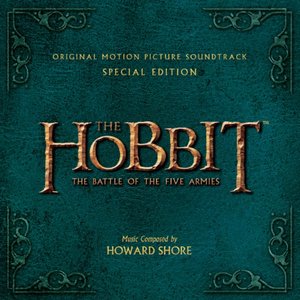
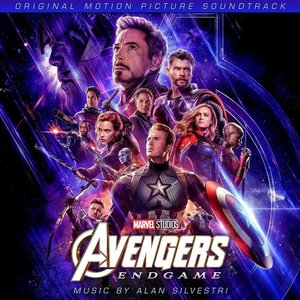
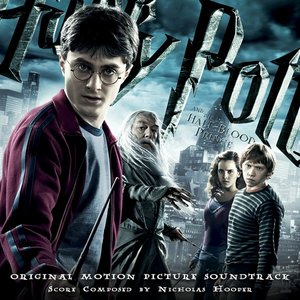
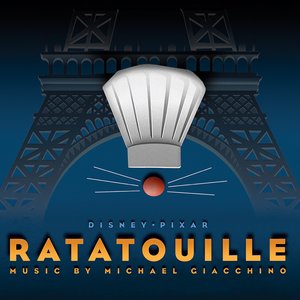

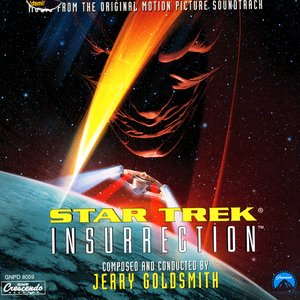
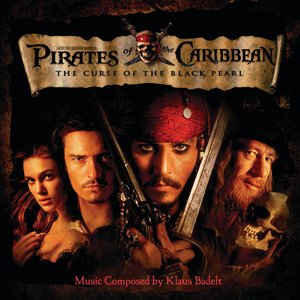
![Interstellar (Original Motion Picture Soundtrack) [Expanded Edition]](https://lastfm.freetls.fastly.net/i/u/300x300/4d6322c6d784708fd7723b991714e51d.jpg)
